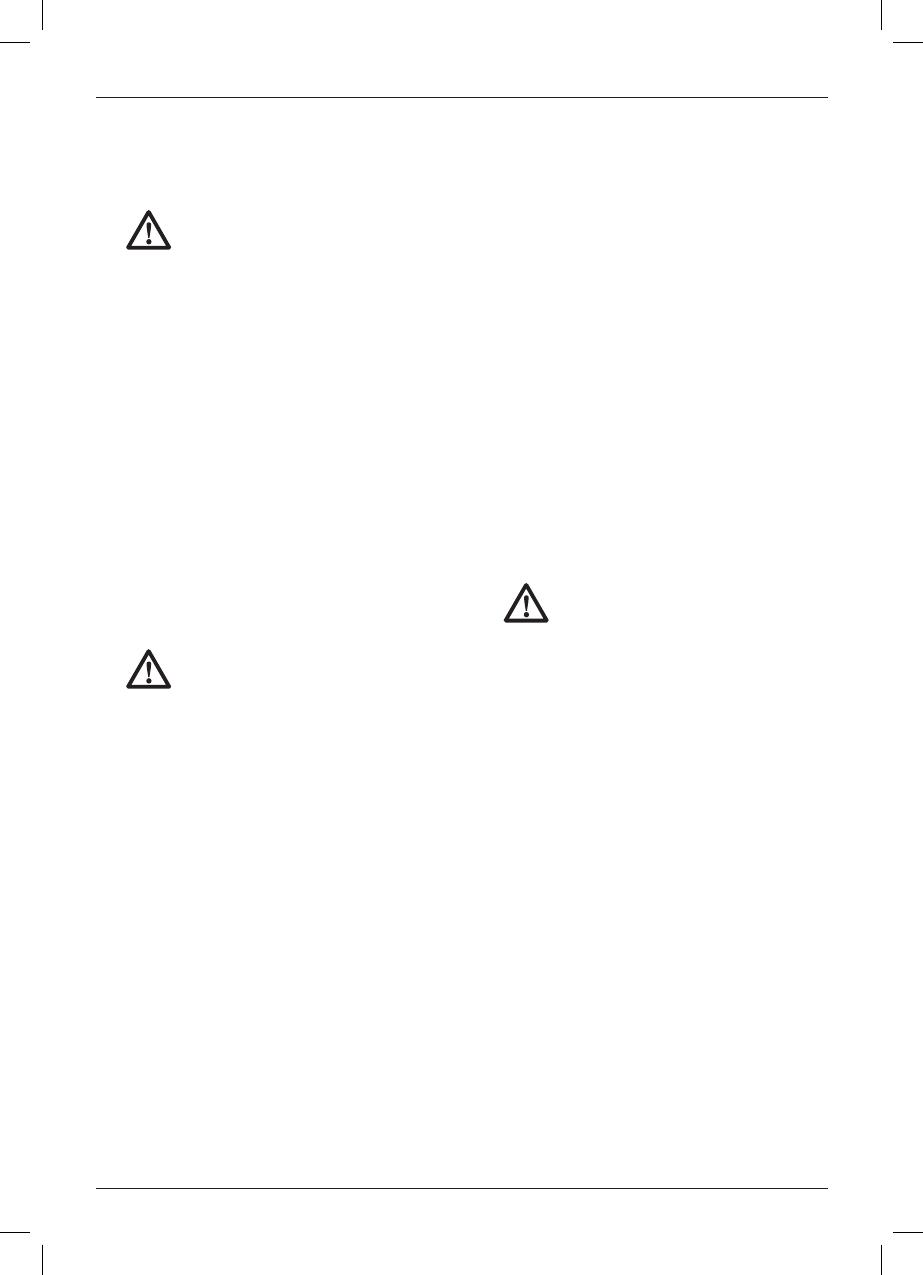
67
english
begin to go off the line, don’t try to force it back
on. Release the switch and allow blade to come to
a complete stop. Then you can withdraw the saw,
sight anew, and start a new cut slightly inside the
wrong one. In any event, withdraw the saw if you
must shift the cut. Forcing a correction inside the cut
can stall the saw and lead to kickback.
IF SAW STALLS, RELEASE THE TRIGGER AND
BACK THE SAW UNTIL IT IS LOOSE. BE SURE
BLADE IS STRAIGHT IN THE CUT AND CLEAR OF
THE CUTTING EDGE BEFORE RESTARTING.
As you finish a cut, release the trigger and allow the
blade to stop before lifting the saw from the work.
As you lift the saw, the spring-tensioned telescoping
guard will automatically close under the blade.
Remember the blade is exposed until this occurs.
Never reach under the work for any reason. When
you have to retract the telescoping guard manually
(as is necessary for starting pocket cuts) always use
the retracting lever.
NOTE: When cutting thin strips, be careful to
ensure that small cutoff pieces don’t hang up on
inside of lower guard.
POCKET CUTTING (FIG. 27)
WARNING: Never tie the blade guard in
a raised position. Never move the saw
backwards when pocket cutting. This
may cause the unit to raise up off the
work surface which could cause injury.
A pocket cut is one that is made in a floor, wall or
other flat surface.
1. Adjust the saw base plate so the blade cuts at
desired depth.
2. Tilt the saw forward and rest front of the base
plate on material to be cut.
3. Using the lower guard lever, retract lower
blade guard to an upward position. Lower rear
of base plate until blade teeth almost touch
cutting line.
4. Release the blade guard (its contact with the
work will keep it in position to open freely as
you start the cut). Remove hand from guard
lever and firmly grip auxiliary handle (F), as
shown in Figure 27. Position your body and
arm to allow you to resist kickback if it occurs.
5. Make sure blade is not in contact with cutting
surface before starting saw.
6. Start the motor and gradually lower the saw
until its base plate rests flat on the material to
be cut. Advance saw along the cutting line until
cut is completed.
NOTICE: Do not switch the tool ON or
OFF when the saw blade touches the
workpiece or other materials.
Workpiece Support (Fig. 23–26)
WARNING: To reduce the risk of
serious personal injury, support the
work properly and hold the saw
firmly to prevent loss of control.
Figures 23 and 25 show proper sawing position.
Figures 24 and 26 show an unsafe condition. Hands
should be kept away from cutting area, and power
cord is positioned clear of the cutting area so that it
will not get caught or hung up on the work.
To avoid kickback, ALWAYS support board or panel
NEAR the cut, (Fig. 23 and 25). DON’T support
board or panel away from the cut (Fig.24 and 26).
When operating the saw, keep the cord away from
the cutting area and prevent it from becoming hung
up on the work piece.
ALWAYS DISCONNECT SAW BEFORE MAKING
ANY ADJUST MENTS! Place the work with its
“good” side—the one on which appearance is most
important—down. The saw cuts upward, so any
splintering will be on the work face that is up when
you saw it.
Cutting
WARNING: Never attempt to use this
tool by resting it upside down on a
work surface and bringing the material
to the tool. Always securely clamp the
workpiece and bring the tool to the
workpiece, securely holding the tool with
two hands as shown in Figure 25.
Place the wider portion of the saw base plate
on that part of the work piece which is solidly
supported, not on the section that will fall off when
the cut is made. As examples, Figure25 illustrates
the RIGHT way to cut off the end of a board. Always
clamp work. Don’t try to hold short pieces by hand!
Remember to support cantilevered and overhanging
material. Use caution when sawing material from
below.
Be sure saw is up to full speed before blade contacts
material to be cut. Starting saw with blade against
material to be cut or pushed forward into kerf can
result in kickback. Push the saw forward at a speed
which allows the blade to cut without laboring.
Hardness and toughness can vary even in the same
piece of material, and knotty or damp sections can
put a heavy load on the saw. When this happens,
push the saw more slowly, but hard enough to keep
working without much decrease in speed. Forcing
the saw can cause rough cuts, inaccuracy, kickback,
and over-heating of the motor. Should your cut





















